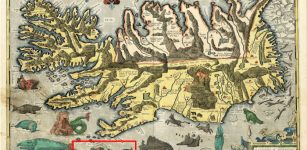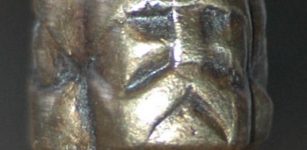The Red-Haired Race And The Atlantean Connection – The Americas – Part 3 Of 3
Lara Lamberti – MessageToEagle.com – The myths of Native Americans sustain that when their ancestors arrived in the Americas, they met an already existing population in the new lands, which they describe as mythical beings.
Was there an unknown culture on the American continent the existence of which goes back to before the last Ice Age? Who were they?
To find some elements that might support this idea, we need to have a look at modern DNA testing.
DNA – the European connection
According to the prevailing New World migration model, migrations of humans from Eurasia to the Americas took place via Beringia, a land bridge that connected the two continents across what is now the Bering Strait.
The most recent migration could have taken place around 12,000 years ago, with the earliest period remaining a matter of some unresolved contention. These early Paleo-Indians soon spread throughout the continent, diversifying into many hundreds of culturally distinct nations and tribes.
However, modern DNA analysis sheds some new light on this theory, leaving scholars with more questions than answers.
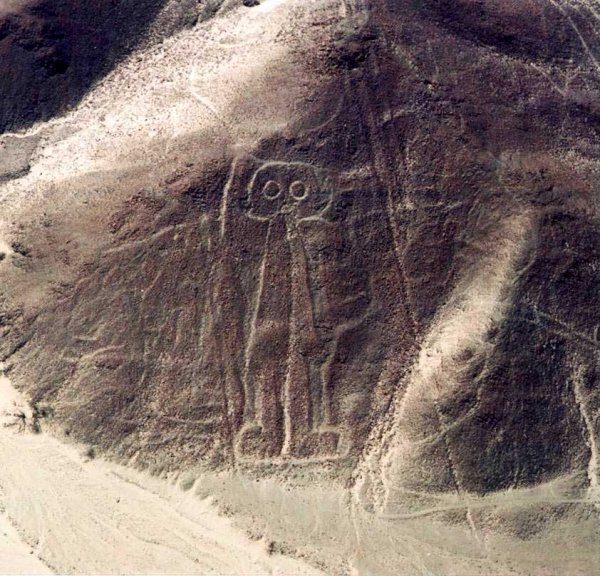
In molecular evolution, a haplogroup is a group of similar haplotypes that share a common ancestor. A haplogroup from mitochondrial DNA can be understood as a marker that can be used to define genetic populations and their migrations. In human genetics, the haplogroups most commonly studied are Y-chromosome (Y-DNA) haplogroups and mitochondrial DNA (mtDNA) haplogroups, both of which can be used to backtrack the migrations and geographical origins of our ancestors.
There are five different haplogroups found within the native tribes of the Americas. In this article and for the purpose, we will focus on only one of them: the haplogroup X.
Haplogroup X is believed to be one of the original haplogroups of the continent. It is present in all indigenous people, with a bigger concentration in some tribes and areas than in others.
Unlike the four main Native American mtDNA haplogroups (A, B, C, D), and the Y-chromosome sub-haplogroup Q1a3a, X is not at all strongly associated with East Asia.
It is only found in small quantities in Western Asian areas, like in the Altay people in Southwestern Siberia.
However, it is found in approximately 7% of native Europeans, and 3% of all Native Americans from North America.
The question that arises from these discoveries is of course:
If the Native Americans migrated once over the Bering Bridge to the Americas and originated in Asia, how is it possible that haplogroup X exists in the Americas and in Europe, but not in (Eastern) Asian populations?

European genes: the scientific debate about the migration into the American continent
Through the analysis of various mutations within haplogroup X, scientists are able to use that ‘genetic clock’ to estimate the time of arrival of those early Europeans. Depending on how large a group they assume headed west, they come up with two time ranges either between 36,000 and 23,000 years ago or between 17,000 and 12,000 years ago. It is for sure that the DNA did not arrive in America with the European explorers of the last 500 years or so. European X and American X are different enough to establish with certainty they must have diverged thousands of years ago. That is long before the age of exploration introduced European genes to the New World.
Interestingly, DNA testing on pre-Columbian Native American skeletal remains showed that haplogroup X was present in those ancient peoples in the same proportion as it is in modern Native American tribes.
The results offer a completely new look on how the American continent was populated and confirm that the cultural similarities between ancient peoples on different continents might be much more than just a coincidence. Scientists try to explain these facts with new theories about the population of the New World. They believe that the Solutreans of Spain might have crossed the Atlantic using the southern Equatorial current and entered the Caribbean and Central America between 18,000 and 12,000 years ago. They would then become known as the Clovis hunters of America. Clovis, with its distinctive biface, blade and osseous technologies, is the oldest widespread archaeological complex defined in North America, dating from 11,100 to 10,700 years before present (13,000 to 12,600 calendar years bp).
However, the DNA analysis of a child’s bones from 12,600 years ago, discovered in the U.S. state Montana, made scientists conclude that those early inhabitants of the American continent migrated to the Americas from Siberia and are therefore of Asian origin.
The recent genetic findings mentioned above suggest also that the people now known as Gaelic speaking Celts (including Irish, Welsh, Scots, Basques and Berbers) are a remnant of a group of people who also left Spain between 18,000 and 12,000 years ago and spent 6,000 years isolated from Europe before returning, bringing the Megalithic culture to coastal Europe.
Considering the cultural findings of the populations in Europe from 18,000 years ago, the question arises whether it is realistic to suppose that those people were able to travel across the ocean to reach the American East cost. Which was the motivation for them to migrate and how did they know that there was another continent on the other side? And if they didn’t know – why would they undertake such a possibly fatal adventure?
These questions remain, until now, unanswered.
Legends
The Paiutes, a Native-American tribe indigenous to parts of Nevada, Utah and Arizona, told early white settlers about their ancestors’ battles with a ferocious race of white, red-haired giants. According to the Paiutes, the giants were already living in the area.
Interestingly, this corresponds to an Egyptian popular, allegorical legend that seems to report the war-like conflicts between the gods and an evil red-haired race. The legend influenced Egyptian Afterlife traditions and led to the human sacrifice of red-haired people. Later on, as already stated in previous articles, Egypt suddenly had a red-haired king. And while this is a fact that researchers accept saying the customs had changed in the new kingdom, one wonders what may have happened to make Egyptian people worship a pharaoh who seemingly was the descendant of their lethal enemy.
Other tribes on the American continent describe the people that their ancestors found at their arrival on the continent as mythical beings with super natural powers. This corresponds to important legends of Central and South American peoples.
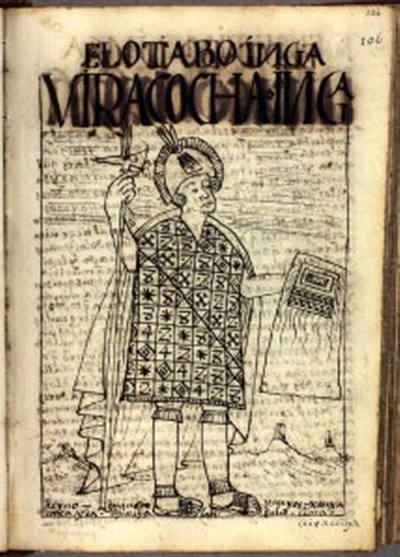
The Mayas and Aztecs recorded their encounters with a race of giants that lived in the north, and everywhere in the populations of the Andes Mountains we find the same legend of a tall, bearded man with fair skin who appeared coming over the ocean. He arrived in times of great trouble when the sun had disappeared and flood had devastated Earth. They called him Viracocha.
The stranger was a man of incredible knowledge. He was a great architect, scientist, engineer and mason. He was generous and loving and taught people how to make a better living for themselves. He was tall, physically strong and had mythical powers that enabled him to form landscapes and create water springs.
He told the people to treat each other with love and respect and do good for others.
One day a group of people in a village stood up against him and threatened him physically. As he was in danger, the man suddenly fell on his knees and lifted up his hands towards the sky, and instantly a fire appeared from the heavens then engulfed him and the people who had aggressed him. They were so frightened that they dropped all weapons, seeking forgiveness.
At his willpower, the fire disappeared. But the bearded man went down to the ocean and stepped into the waves. He promised to come back, but he was never seen again.
The people who witnessed his farewell called him ‘Viracocha’ which means ‘Foam of the Ocean’.
Nobody knows who the Viracocha was. Ancient Spanish documents report that a marble statue of the Viracocha existed once in Coriancha in Peru. The statue was described as to look like Saint Bartholomeus. Other sources said that it looked like Saint Thomas.
One thing is for sure: whoever he was, the Viracocha was certainly not a Native American, but rather someone of Caucasian appearance.
A similar story is told about the Mesoamerican deity Quetzalcoatl.
The name originates from Nahuatl language and means ‘feather serpent’. Many depictions show him exactly as that.
The legends say that Quetzacoatl arrived coming from the ocean to the land that today is Mexico. He was described as a tall man with light skin and a beard and as a powerful if also ethereal being.
Quetzacoatl brought the peoples of the area great knowledge. He was a mathematician, and it is believed that he was the one who gave the Mayas their complex calendar, based on his formulas.
The Spanish who have documented the conquest of America describe the being they had heard of as a man with light skin with a long beard, tall and with a high forehead, big hazel eyes and physically strong. He refused blood sacrifices and predicated peace.
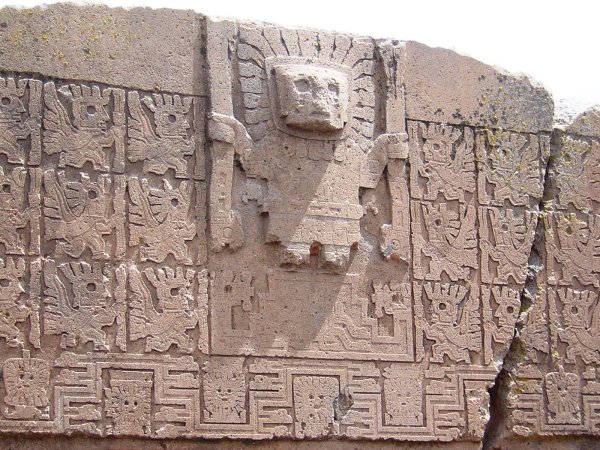
Throughout the continent, Quetzacoatl was called with different names. In Chichen Itza he was called Kukulcan, and the Quich?-Maya called him Gucumatz. Both names again mean feathered serpent. Other names for him were Itzamana and Votan. All these Gods brought culture and knowledge to the peoples that came in contact with them. All of them came across the ocean, and all of them went back into the waters with the promise to come back.
It is very unlikely that the parallels in these legends are mere coincidence. Did the Native Americans imagine people of Caucasian appearance long before the first Europeans arrived on the continent? Or is it possible that they had actually seen such people before the arrival of the official discoverers?
It is said today by scholars that the Spaniards who documented the conquest of Mesoamerica, might have changed the stories told to them in a way that Mesoamerican deities became more and more similar to Europeans. But it is a widely known story that when the Spanish Conquistadores reached the shores of what is today Mexico, the Aztec King Montezuma and his people went to greet the visitors and honored them as returning Gods. The Aztecs were warriors and certainly conscious of the possibility that strangers who appeared at their coasts might not have come with peaceful intentions.
If the description of a light skinned and bearded Quetzalcoatl were the mere fantasy of the Spaniards, why did the Aztecs consider them returning Gods?
Red-haired mummies of the Americas: survivors of a sunken continent?
In North America, red-haired mummies have been found in Michigan, Illinois, New York State, Virgina, Arizona and Nevada.
In South America, red-haired mummies and giant humanoid bones have been unearthed in Peru, Brazil, Chile, Bolivia, Ecuador, and Columbia.
The finds had a major impact on common theories about early populations and their migrations and changed the widely accepted theory of the population of the Americas entirely, enhanced by modern genetic research. The debate stretches from theories about different simultaneous migrations into the Americas to claims about racist intentions.
Fact is, however, that up to the current day, nobody has a clear answer to the allover question: how is it possible that there are genetic and cultural similarities in ancient populations in many places on the globe, very distant from each other, if we assume that the cultures in those places had no direct contact?
With the latest DNA results, scientists saw themselves forced to drop this latter claim. Yet, any kind of contact doesn’t explain why red-haired mummies are found all over the globe, and why the cultural impact on all other peoples was so striking. And it has yet to be found out which human race?s members were taller than modern man and characterized by red hair.
Not later than now, the question arises: was there eventually an earlier civilization, possibly highly advanced, that migrated into other continents?
And if so, what were their motivations? Were they just a belligerent, aggressive people who wanted to expand and subdue all other populations? But then again, who were they? Common history about human ancestry has ignored those people’s existence entirely. They weren’t actually known until the evidence of their existence popped up with the discoveries of the mummies. So, where was their home place? Where did they originate from? Were they really descendants of European races?
Or are the European races rather descendants from a people that at some point landed on European shores? Are they the so called ‘Civilization X’, the mysterious culture previous to everything we know about the history of mankind?
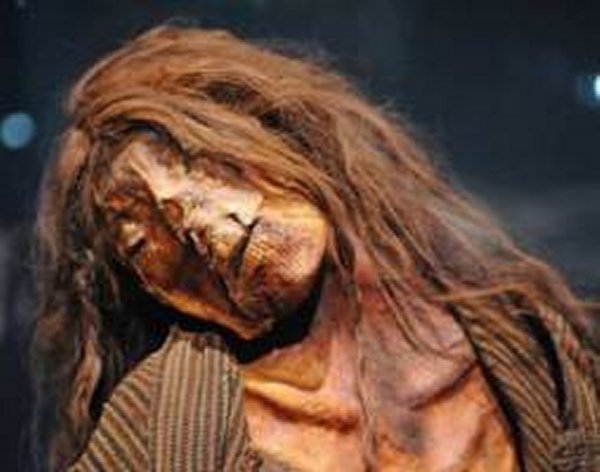
Atlantis
Many hypothesis of the location of the mythical continent Atlantis have been made since Plato mentioned it in his works Timaeus and Critias.
Many researchers consider it a great possibility that it was somewhere in the Atlantic Ocean. When it sank into the floods, some people could have managed to escape and reached the shores of distant continents. They might have brought their knowledge and culture to other tribes and peoples; they might have come in Athanasius Kircher’s Atlantislict with them or tried to subdue them.
However, this hypothesis would solve the DNA riddle, and explain apparently incomprehensible similarities in the different cultures. It would explain why the mysterious tall redheads appear in the tales of cultures that live far away from each other and why their mummified remains are being found in the most unthinkable places all over the globe.
Unfortunately, when we search for official information about the mythical continent, we find out that its real existence keeps not being considered a possibility by scholars.
Atlantis is the name of a fictional island mentioned within an allegory on the hubris of nations in Plato?s works Timaeus and Critias, where it represents the antagonist naval power that besieges ‘Ancient Athens’, the pseudo-historic embodiment of Plato’s ideal.
Nevertheless, the fascination by the story and the search for hints for its real existence will likely never cease. Atlantis would have existed in a very distant time. Swallowed by the ocean, it left no considerable trace of its existence. Therefore, for modern science it remains a fairy tale.
Nevertheless, putting together lose ends researching genetic and anthropological mysteries, the sunken continent offers a much better explanation than many scientific theories of today.
Written by Lara Lamberti – MessageToEagle.com Contributor
About the author:
Lara Lamberti – is an actress, writer, director and producer. She attended acting school as a teenager and quickly became a well known actress in Italy and abroad while attending the script writing classes of Riccardo Aragno in Rome. Lara attended the university in Berlin and Rome, studying first journalism and biology and later psychology and musicology. She is currently working on her Mystica project, a TV series about the world’s mysteries. For further information you may also see:


